And, to get this out of the way right away, it’s a good thing that the Bears-Seahawks games was a preseason one – ’nuff said…
The first day of the 2014 ISEC Space Elevator Conference was outstanding. The morning was “setting the stage”, introductory information and a fine Keynote speech from Science writer Leonard David of how the Space Elevator fits into the current space paradigm.
 The afternoon sessions were all technical ones and I think it’s safe to say all attendees learned a lot. It’s hard for me to pick a favorite, but I must comment on the final session of the day, on Weather; how it can be measured, how it can be forecast and what it means for a space elevator. The presenter, Winifred Crawford ended her presentation with the suggestion that we start recruiting a meteorologist (or two) and freely admitted that she was hooked on the concept of the Space Elevator.
The afternoon sessions were all technical ones and I think it’s safe to say all attendees learned a lot. It’s hard for me to pick a favorite, but I must comment on the final session of the day, on Weather; how it can be measured, how it can be forecast and what it means for a space elevator. The presenter, Winifred Crawford ended her presentation with the suggestion that we start recruiting a meteorologist (or two) and freely admitted that she was hooked on the concept of the Space Elevator.
All of these sessions are being recorded and will be on our video website in the near future – watch this space for an announcement…
On to Day 2!

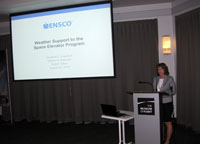
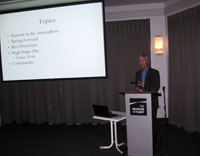
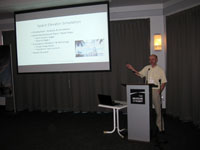
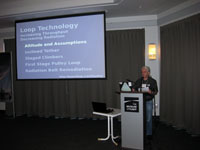
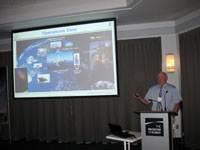
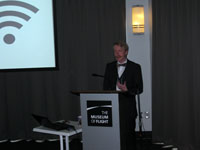
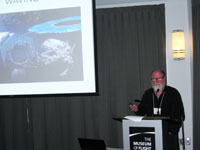
 It’s Friday, August 22nd, 2014 and that means it’s the first day of the 2014
It’s Friday, August 22nd, 2014 and that means it’s the first day of the 2014  I’m bringing all this up because when I left the hotel this morning, riding down in the elevator with me was a young couple and the lady was wearing a Chicago Blackhawks TShirt. I commented to them that “I like your TShirt”. They smiled and asked me if I was from Chicago. When I said I was, they said they were too. I asked them if they were going to watch the Bears-Seahawks game tonight and they said they were actually going – they had tickets! I’m jealous.
I’m bringing all this up because when I left the hotel this morning, riding down in the elevator with me was a young couple and the lady was wearing a Chicago Blackhawks TShirt. I commented to them that “I like your TShirt”. They smiled and asked me if I was from Chicago. When I said I was, they said they were too. I asked them if they were going to watch the Bears-Seahawks game tonight and they said they were actually going – they had tickets! I’m jealous.